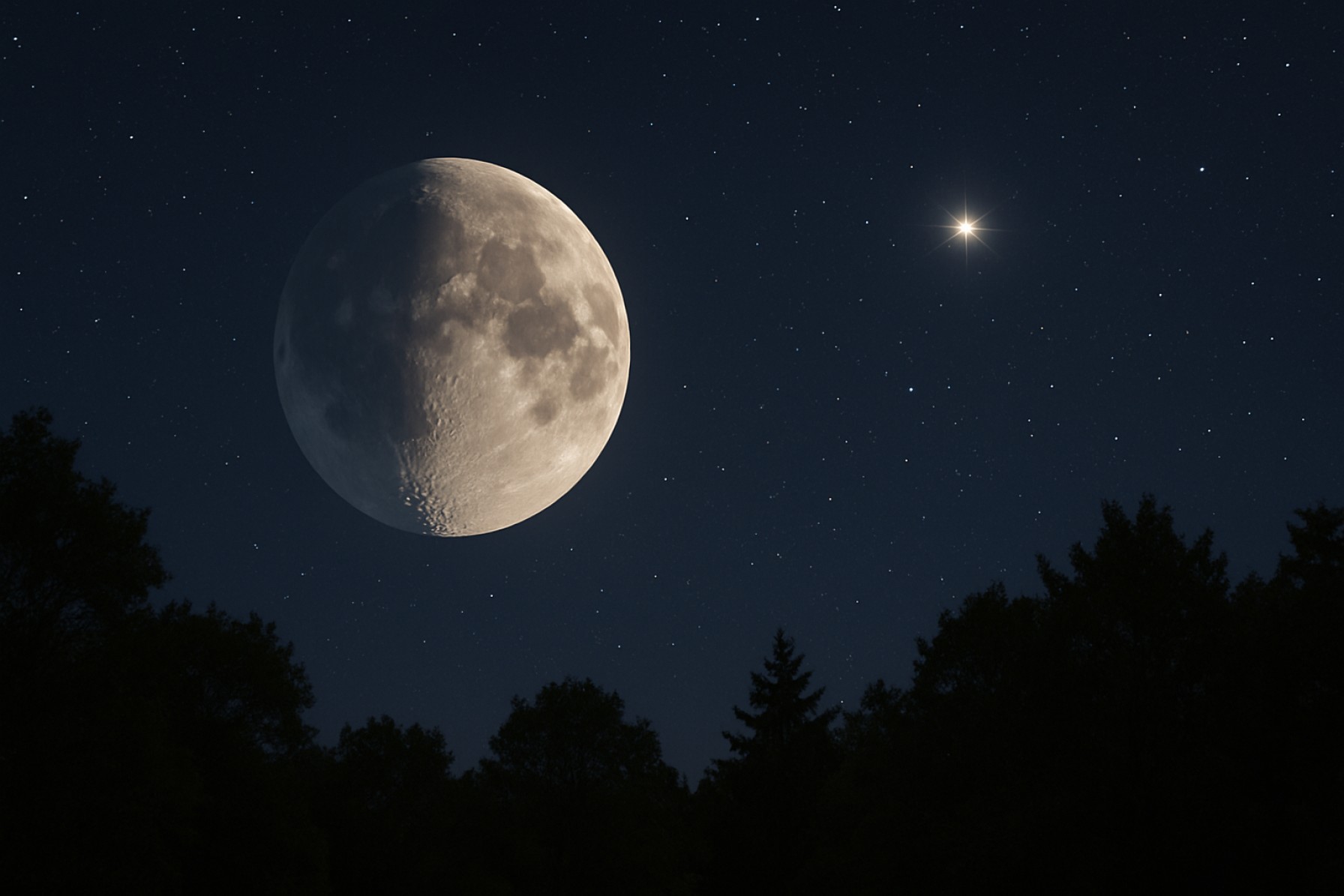Don’t Miss June’s Wild Moon-Spica Night—Here’s How and Where to Watch the Celestial Spectacle
The waxing gibbous moon and Spica create a rare, stunning alignment tonight—here’s how to catch the action and what makes it special.
- 7° — Distance between Moon and Spica on June 5
- 12,000x — Spica’s combined brightness compared to our sun
- 2 stars — Spica system is a binary star, not a single point
- 250 light-years — Distance from Earth to Spica in Virgio
Tonight, stargazers across the U.S. are in for a rare treat as the waxing gibbous moon cozies up to Spica, one of the sky’s brightest stars. As the fiery lunar disk climbs above the southwestern horizon about an hour after sunset, Spica—the twinkling jewel of the Virgo constellation—will gleam just over seven degrees to its left.
Bring out your sense of wonder and your outstretched hand: the distance between the moon and Spica will measure a bit less than your fist width at arm’s length. That’s your ticket to cosmic scale!
But there’s more: The night sky will be ablaze with celestial neighbors. Look high overhead for the orange-hued Arcturus shining near the zenith. In the west, Mars forms a striking red pair with Regulus, the regal heart of Leo. With so much action packed into one night, every sky lover’s gaze is sure to be rewarded.
Q: What Exactly Is Happening Tonight?
The moon is heading into its full phase (expected on June 11) and, on June 5, passes tantalizingly close to Spica. As the evening unfolds, the pair glides together across the sky, eventually slipping below the western horizon just before dawn. For most observers, it’s a striking near-miss, but in select spots in the Southern Hemisphere—including Tasmania, Antarctica, and the McDonald Islands—a rare lunar occultation will occur. Here, the moon will actually block Spica from view, a cosmic game of hide-and-seek starting just after 8:23 a.m. ET (12:23 GMT) on June 6.
Q: How Do I See the Moon and Spica?
1. Head outside about an hour after sunset.
2. Face southwest and look up—moon first, then scan slightly left for Spica.
3. For best results, find a dark spot away from bright city lights.
4. Use your fist (about 10° wide) to measure – Spica will be just left of the moon.
5. Want a closer look? Even basic binoculars or an entry-level telescope, like the Celestron NexStar 4SE (highly rated by amateur astronomers), will reveal dazzling lunar detail.
Q: What Makes Spica Special?
Many skywatchers don’t realize Spica isn’t a single star, but an extreme binary system—two massive blue-white stars locked in a tight, four-day orbit only 11 million miles apart. The gravity between them distorts their shapes, making both stars slightly egg-shaped rather than perfect spheres. Combined, their brilliance outshines our own sun by a factor of 12,000! This celestial duo sits roughly 250 light-years away, but their glow cuts through the abyss as one of Earth’s prominent night beacons.
How-To: Capture the Perfect Sky Photo Tonight
- Use a sturdy tripod and wide-angle lens to frame both the moon and Spica.
- Set your camera to manual mode; try ISO 800, aperture f/4-5.6, and a 1-2 second exposure (shorter if shooting a bright moon).
- Focus on the moon or use distant stars to get crisp results.
- Edit with a gentle hand—boost contrast, but preserve those starlit blues and grays.
Share your celestial snapshots with communities like Space.com or explore astrophotography tips on NASA.
Q: Where Can I Learn More or Gear Up?
– Check out telescope buying guides at National Geographic or the latest celestial updates at Sky & Telescope.
– See trending binocular deals as we head into summer 2025.
Seize the Starry Night: Your 2025 Skywatching Checklist
- Set alarms for June 5 (Moon-Spica) and June 11 (Full ‘Strawberry’ Moon).
- Scout your local sunset time and weather forecast.
- Prepare binoculars, cameras, or a telescope for best results.
- Share your photos and sky stories with astronomy communities.
- Mark your calendar for more June sky events—Mars, Regulus, Arcturus, and beyond.
Don’t miss one of 2025’s most dazzling night sky events—gather your friends, look up, and let the cosmos inspire your next adventure!
